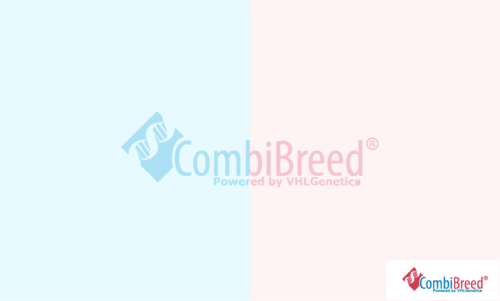Albinism
Most genetically-determined coat colour traits are caused by various genes (mutated or otherwise) affecting the amount and distribution of melanin (pigment) in an animal’s hairs and skin. Albinism, however, involves a general loss of pigment production. The traits described in this section are all forms of Oculocutaneous Albinism (OCA), an array of disorders in which an affected animal produces little to no pigment throughout the body. This leads to silver/white fur, pale or even pink/red eyes, and increased sensitivity to light.
While albinism is classified as a genetic trait in this database (as opposed to a disease/disorder), there is still a health aspect to the trait. The lack of protective pigment means that albino animals can be highly light-sensitive. This often manifests as a tendency to squint the eyes or otherwise show discomfort in bright (sun)light.
Inheritance
Oculocutaneous Albinism inherits as in an Autosomal Recessive manner, this means that only homozygotes display the characteristics. Because it causes a loss of pigment production, OCA effectively “overrides” any other genetic traits that might affect coat colour.
Relevant tests
- H393
- H715
- H751
- H894
